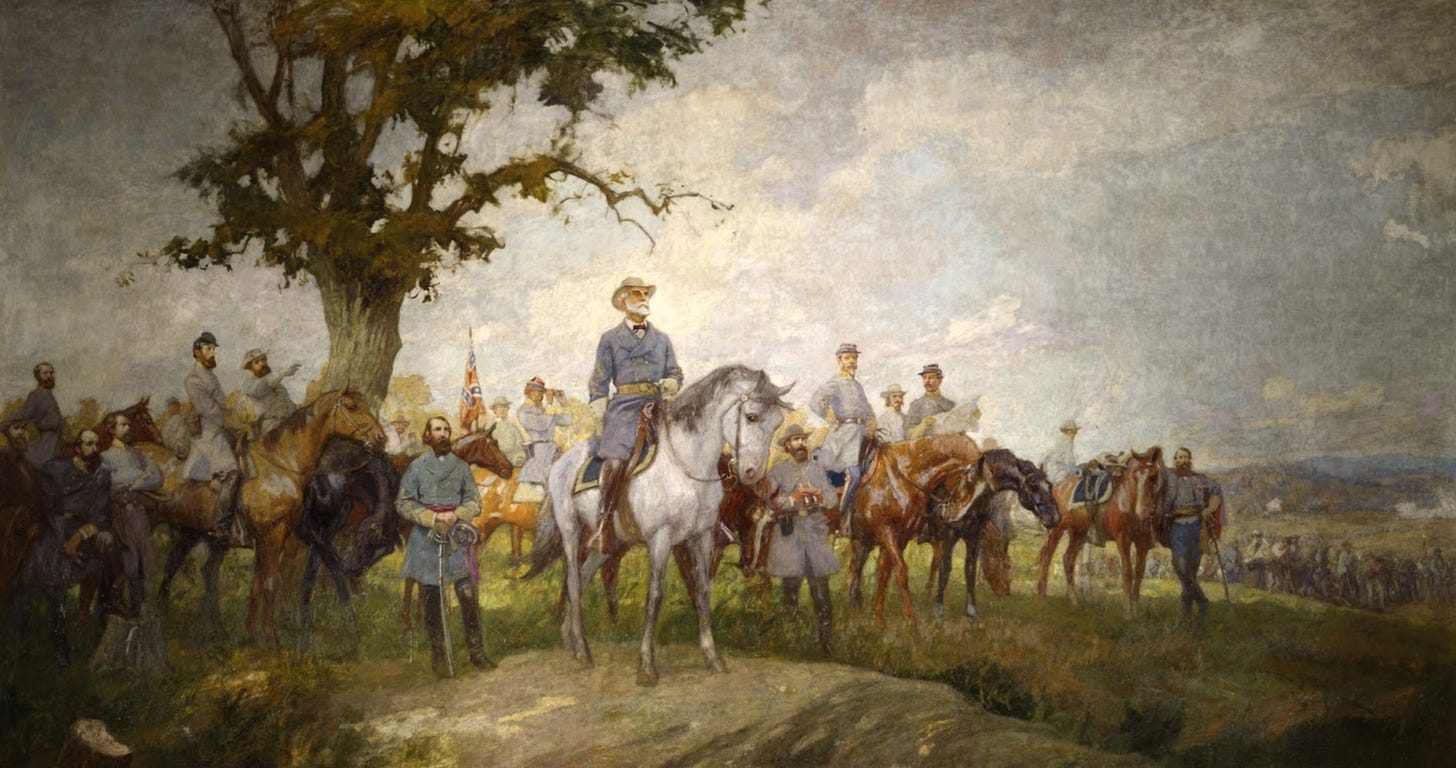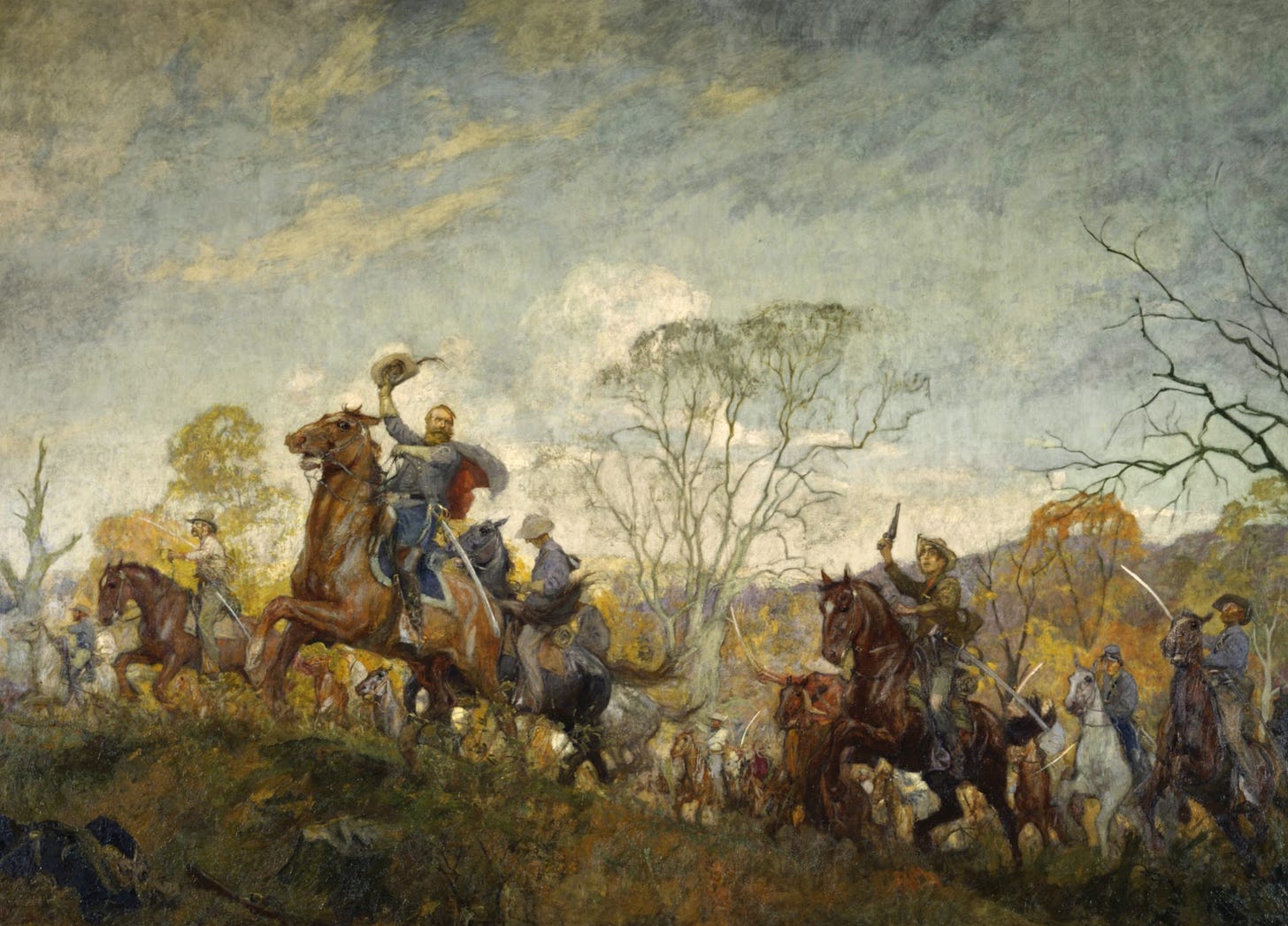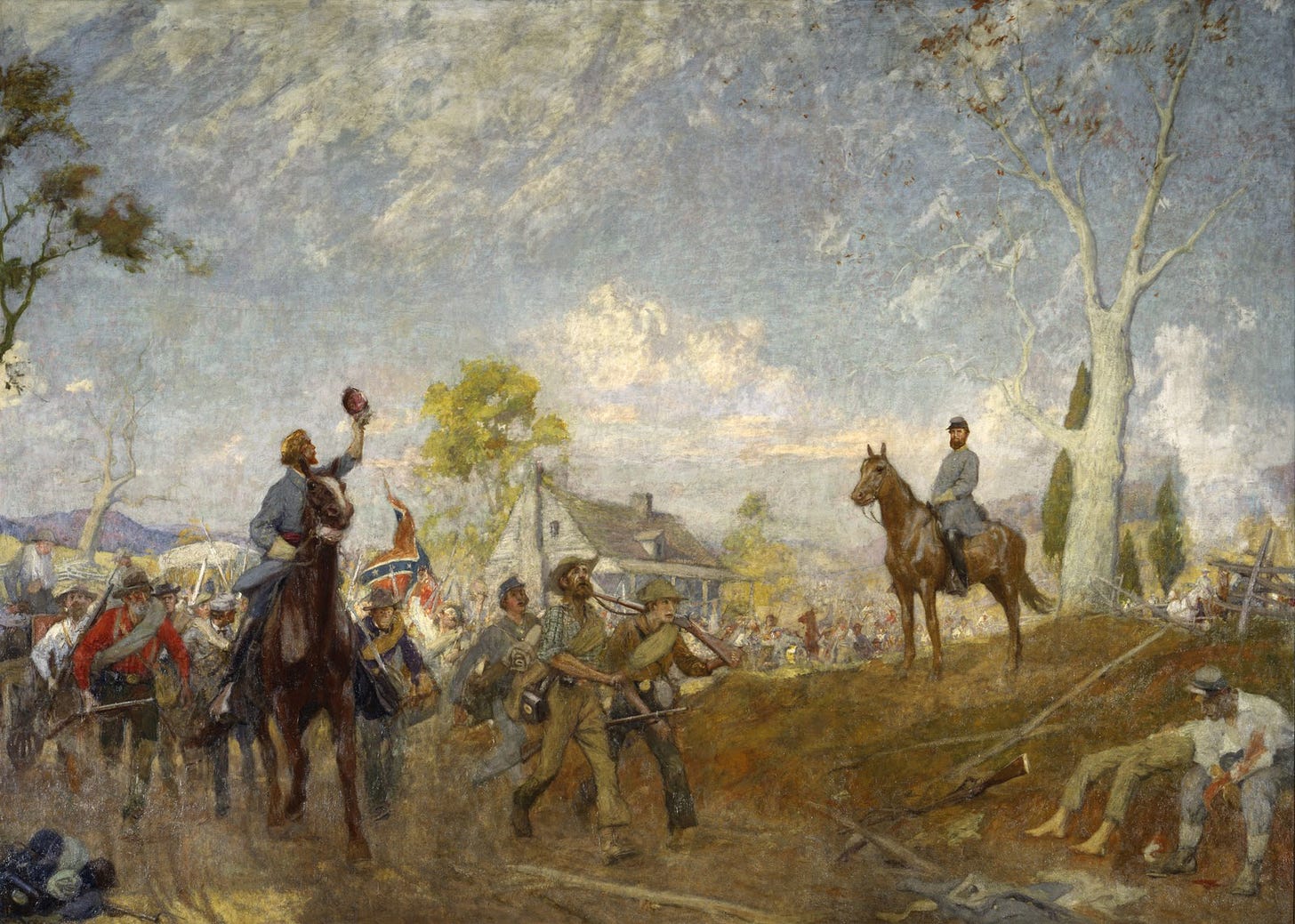I’ve learned a bit more about the details surrounding the budget for the recent restoration and expansion of the VMHC. This post made it seem as if millions had been spent creating an interpretive space for the murals and Lee statue, but this is misleading. The $30 million was applied to roughly two dozen interpretive spaces throughout the museum. In fact, only $75,000 was earmarked for the Lost Cause gallery.
My apologies for the confusion and misleading post title.
Clarification: The restoration of the Hoffbauer Murals was begun under the leadership of Paul Levengood and was supported, in part, by a grant from Saving America's Treasures ($375,000); the work was completed in 2015. I can see how the title of this post is misleading, but I hope the main point of the post is clear enough.
The Virginia Museum of History and Culture (formerly the Virginia Historical Society) in Richmond recently completed a $30 million dollar renovation and expansion of its facility. The museum is located in Richmond’s historic Fan District next to the national headquarters of the United Daughters of the Confederacy and just a block away from what was once Monument Avenue.
One of the centerpieces of this project is the restoration and reinterpretation of Charles Hoffbauer’s murals celebrating the Confederacy. Edward Rothstein recently offered a helpful overview of the challenges faced in interpreting these paintings:
The difficulty—for visitors, as for the museum—is that these murals are called “The Four Seasons of the Confederacy” and their purpose is to mourn the Confederacy’s defeat. In “Summer,” we see Gen. Robert E. Lee on a white horse, flanked by an all-star Confederate lineup; in “Winter,” we see Confederate martyrdom. The building was devoted to the same sentiments. It was constructed by the Confederate Memorial Association as an archive and a shrine, paying tribute to the “Lost Cause”—the conviction that slavery had been falsely maligned, and that the South was wrested from pastoral gentility by Northern aggression.
Complicating matters further, the “Battle Abbey”—as the original building was once colloquially called—was acquired by the Virginia Historical Society in 1946 and later became its headquarters. How would a society devoted to history come to terms with that past? And since monuments are now toppled for far less, how were the murals to be treated in the latest reconstruction, which the museum began in 2018 under its current CEO, Jamie Bosket? The project, completed this spring, cost more than $30 million, expanded exhibition space by 50%, and promised to transform its 250,000 square feet with a commitment to diversity in narrative and audience.
The restoration of Hoffbauer’s murals began in 2012. My student tours of Richmond between 2000 and 2011 almost always included a stop at the museum to view the murals. At the time there was very little interpretation to help visitors understand their history and how they fit into the Lost Cause narrative. Thankfully, this has been rectified.
The mural gallery is now presented in context as a small exhibition, “The Lost Cause: Myths, Monuments, & Murals.” It is remarkably successful in giving us a sense of history under revision—showing us precisely what distortions took place, while letting us see them intact. There is no attempt to avoid or cancel. There is no posturing or virtue signaling. The gallery provides details about the building, the murals, and shifting historical interpretations. We are shown excerpts from a 1919 pamphlet that urged Southern school districts to reject any book “that does not give the principles for which the South fought” or that “glorifies Abraham Lincoln.” We see a timeline showing when Confederate monuments were dedicated (with an eruption of activity during the Jim Crow decades early in the 20th century). And we see how many, in recent years, have been deposed.
The gallery also contains a bronze statue of Robert E. Lee that, in 1909, had been sent to the National Statuary Hall in the Capitol along with one of George Washington—two Virginians deemed worthy of “national commemoration.” In 2020, the Virginia General Assembly voted to replace Lee’s statue with one of Barbara Johns, a black student who at age 16 led a protest against school segregation in a battle that was consolidated into the landmark 1954 Supreme Court case, Brown v. Board of Education.
My next trip to Virginia is most definitely going to include a stop at the VMHC, but it is worth asking whether the cost has been worth it. Should museums spend millions of dollars to preserve and interpret the Lost Cause? I can’t help but wonder whether today a Richmond museum could justify the restoration of Hoffbauer’s murals and raise the necessary funds given the protests and removal of Confederate monuments that began across the city in 2020.
A case could be made that other areas of Virginia history and American history generally—especially subjects long obscured and distorted by the Lost Cause—deserved the millions raised for this project. Think of the countless number of artifacts and stories that could be interpreted for the general public, in many cases for the first time.
That said, I think the financial assets that have been focused on preserving and interpreting the Lee statue and the Hoffbauer murals has been money well spent. We need places like the VMHC and other institutions—now more than ever—and especially in the former capital of the Confederacy, where the public can go to learn and reflect on this important and still widely misunderstood history.
Much of the public discussion about the Lost Cause over the past few years has been tangled up in the monument removals and Donald Trump’s “Big Lie.” Unfortunately, equating the Lost Cause with an election lie has done little to educate the public about either. On the one hand it’s encouraging to see references to the Lost Cause in connection to Confederate monuments, but more often than not the history presented is narrow and offers little historic insight. History cannot be reduced to a catchy tag line and its complexity is rarely captured in an Op-Ed or tweet.
I have long maintained that the removal of Confederate iconography ought not to be seen as tantamount to erasing history. There are many ways to uncover and explore the past, but that doesn’t mean that we can’t learn about history and memory through the study of monuments, paintings, flags, and other artifacts.
We can and we should and I for one am encouraged that the public will be able to do so at one of Richmond’s finest museums.







I look forward to visiting the updated and expanded Virginia Museum of History & Culture. If I understand correctly, the mural restoration is a relatively small component of the $30M project.
I always enjoy reading Ed Rothstein's review, but I think a little clarification is in order. Restoration of the Hoffbauer murals was a three-year project begun in 2012 and supported in part by a grant from Saving America's Treasures ($375,000); the work was completed in 2015. The CEO of the VHS at the time was Paul Levengood. The recently completed $30 million renovation, led by the current CEO Jamie Bosket, involved a major renovation and reworking of all the gallery spaces in the VMHC, including the installation and interpretation in the Hoffbauer gallery of the Lee statue removed from Statuary Hall in the US Capitol. As noted by Mr. Rothstein, it is an effective installation.
I'll be interested to read your reaction to the renovated galleries.